Several weeks ago, my esteemed colleague, Michael Wall, presented a brief overview of horror in the comics. But, nicely done as it was, he did miss a notable footnote in the history of four-color spectral graphics.
Horror comics flourished from the late forties until 1955, when it was decided by parents and guardians of morals that comics were the cause of all evil in the world. Comic book publishers, like the movie industry before them, decided to form their own code, forestalling any government action. This famous picture appeared in newspapers at the time, showing how comic art would be made safe.
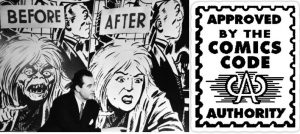
- Crimes shall never be presented in such a way as to create sympathy for the criminal, to promote distrust of the forces of law and justice, or to inspire others with a desire to imitate criminals.
- If crime is depicted it shall be as a sordid and unpleasant activity.
- Policemen, judges, government officials, and respected institutions shall never be presented in such a way as to create disrespect for established authority.
- Criminals shall not be presented so as to be rendered glamorous or to occupy a position which creates a desire for emulation.
- In every instance good shall triumph over evil and the criminal punished for his misdeeds.
- Scenes of excessive violence shall be prohibited. Scenes of brutal torture, excessive and unnecessary knife and gunplay, physical agony, the gory and gruesome crime shall be eliminated.
- No comic magazine shall use the words “horror” or “terror” in its title.
- All scenes of horror, excessive bloodshed, gory or gruesome crimes, depravity, lust, sadism, masochism shall not be permitted.
- All lurid, unsavory, gruesome illustrations shall be eliminated.
- Inclusion of stories dealing with evil shall be used or shall be published only where the intent is to illustrate a moral issue and in no case shall evil be presented alluringly, nor so as to injure the sensibilities of the reader.
- Scenes dealing with, or instruments associated with walking dead, torture, vampires and vampirism, ghouls, cannibalism, and werewolfism are prohibited.
- Profanity, obscenity, smut, vulgarity, or words or symbols which have acquired undesirable meanings are forbidden.
- Nudity in any form is prohibited, as is indecent or undue exposure.
- Suggestive and salacious illustration or suggestive posture is unacceptable.
- Females shall be drawn realistically without exaggeration of any physical qualities.
- Illicit sex relations are neither to be hinted at nor portrayed. Rape scenes, as well as sexual abnormalities, are unacceptable.
- Seduction and rape shall never be shown or suggested.
- Sex perversion or any inference to same is strictly forbidden.
- Nudity with meretricious purpose and salacious postures shall not be permitted in the advertising of any product; clothed figures shall never be presented in such a way as to be offensive or contrary to good taste or morals.
The comic companies joined the code voluntarily. They would submit their books to the code authority prior to publication for approval (and receive lists of corrections if needed) before the comics would be allowed to display the Comics Code stamp of approval on their cover. All the comic companies who had joined the code abided by this, until DC and Marvel published anti- drugs stories without code approval, (drug depiction, even anti-drug, being against the code), which led to revisions and easing of the code, and returned werewolves, vampires and others to the four-color pages. But all the comic companies who had joined had abided by the code over the years. All those who joined…
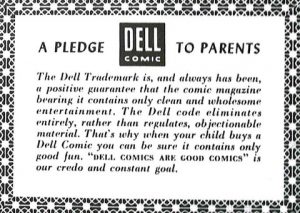
Dell comics had proudly printed their own declaration of quality in each comic, basically telling parents that they didn’t need the code, that they had higher standards than the code.
And they were more or less correct, being known primarily for Donald Duck, Bugs Bunny, and some movie and TV show adaptations. A study would probably show some of these technically tip-toed over the line once in a while. But by and large they remained safely inbounds. That is, until…
Circa 1960 monsters made a big return to popular kid and teen culture. The classic monster movies of the thirties were released to televisions, new movies were made aimed for the teenage moviegoers, and monster magazines and plastic models flourished. Dell decided to publish some horror comics. Code? What code?
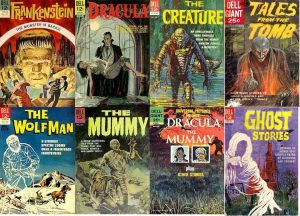
Apparently instructed to do scary stories, the writers (mostly John Stanley) took that to heart. Comics published under the code might show children frightened, only to learn there was nothing to be afraid of. In Dell’s horror comics, they had reason to be afraid.
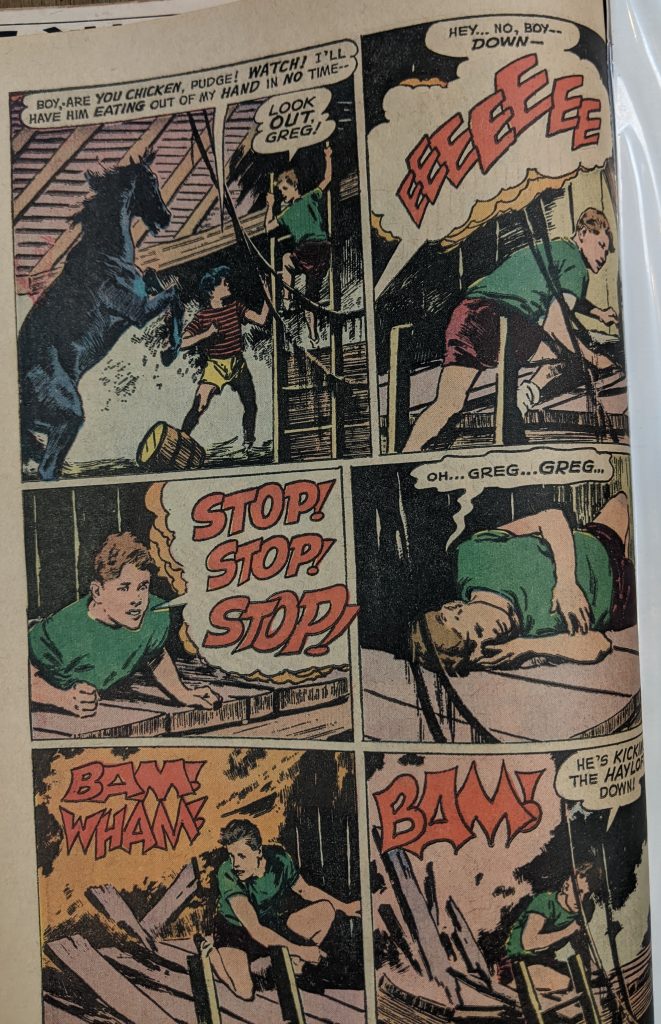
Suggestive posture unacceptable? Unsavory illustrations not allowed?
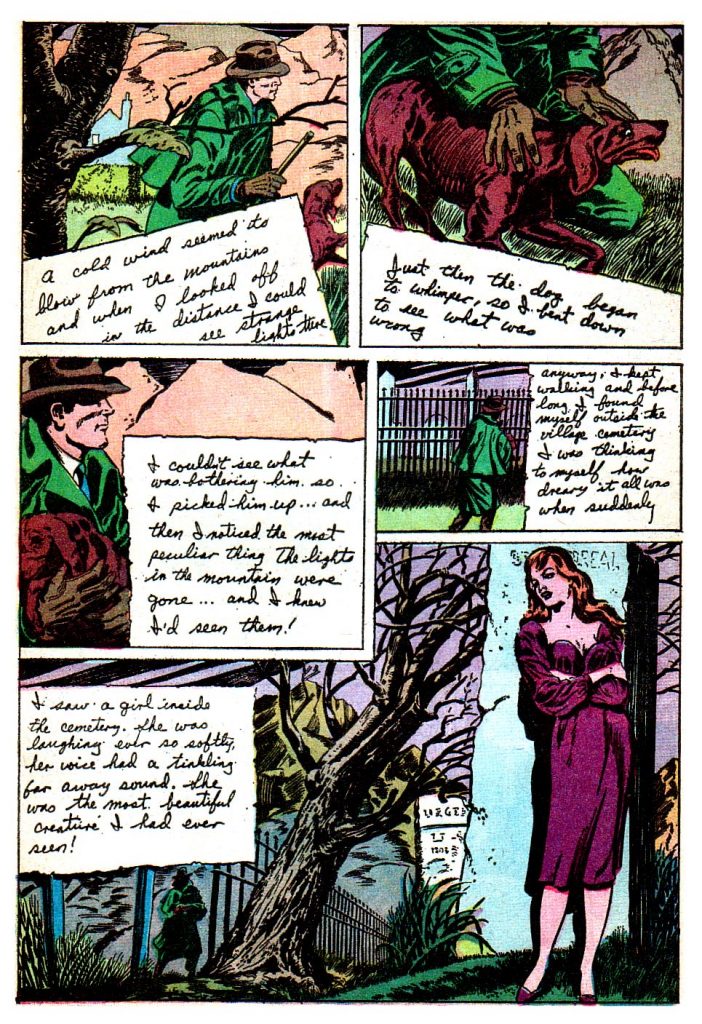
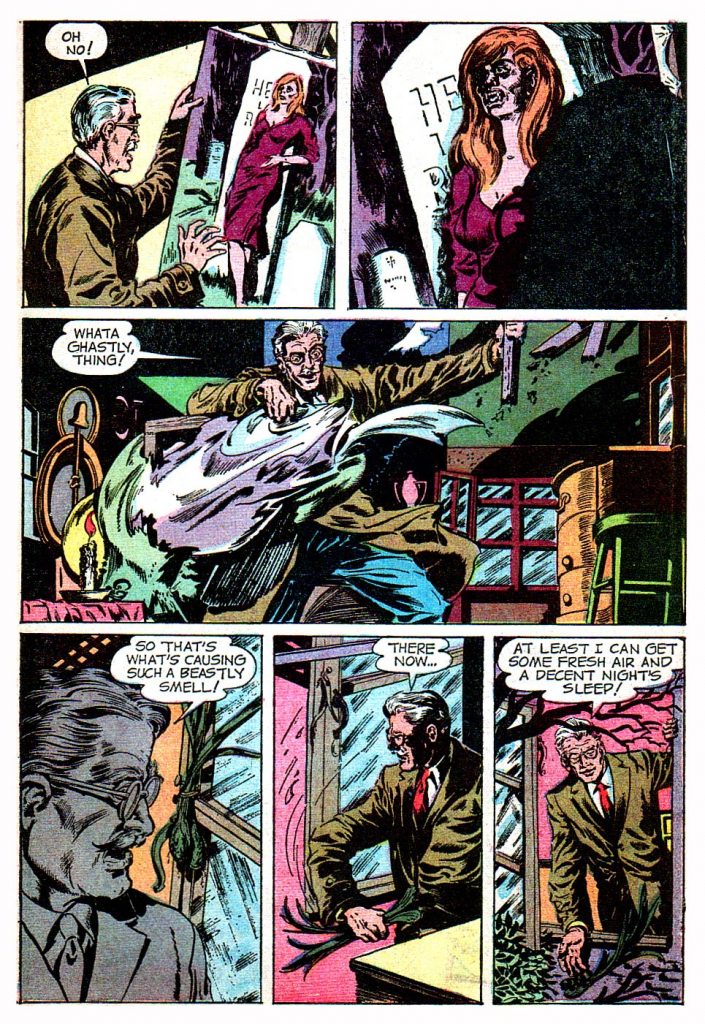
As for no vampires, Dell went right to the gran-daddy, Dracula.
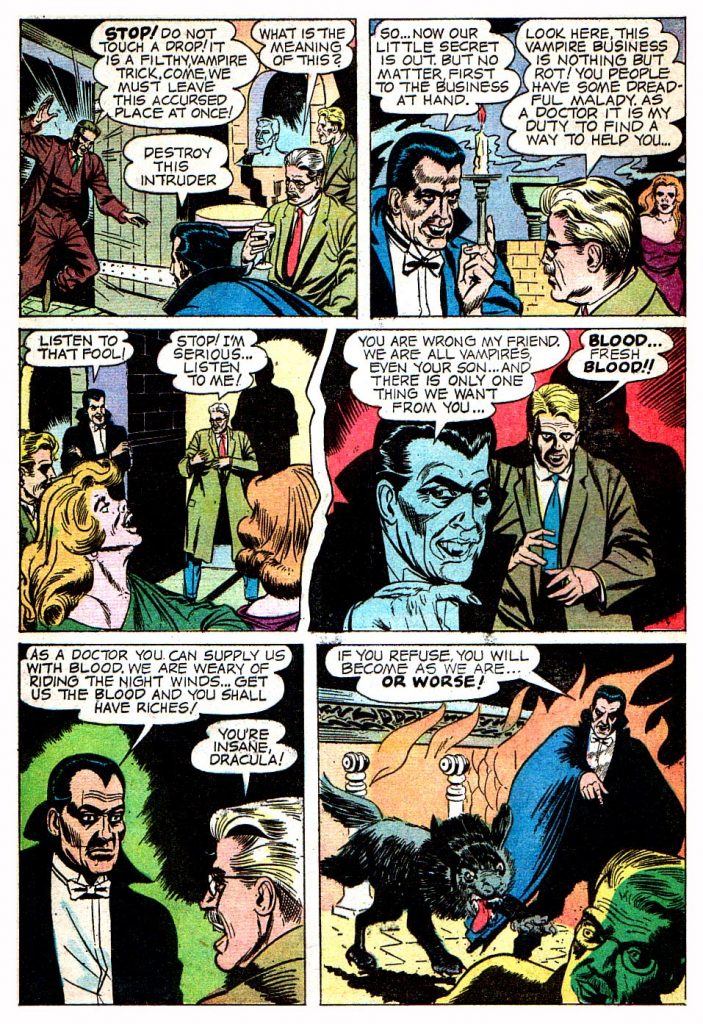
Mostly on the stands from 1962 to 1963, the word must have come down, and later issues of Ghost Stories lean more toward Twilight Zone territory. Dell did do adaptations of some of American-International’s Edgar Allen Poe movies. And in 1966 they tried to make super-heroes of Dracula and Frankenstein, with absurd results. But the earlier books were quite unnerving to kids used to DC’s House of Secrets and Marvel’s goomgastic monsters. They scared the hell out of kids. They did me (I loved it).


